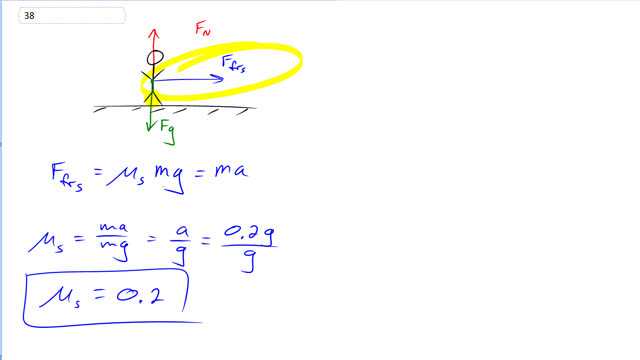
Suppose you are standing on a train accelerating at 0.20 g. What minimum coefficient of static friction must exist between your feet and the floor if you are not to slide?

In order to watch this solution you need to have a subscription.
This is Giancoli Answers with Mr. Dychko. There are three forces acting on this person standing in a train. There's a normal force upwards, gravity downwards, and this friction force it's the static friction force which is what's accelerating the person forwards or backwards. And the static friction force equals the coefficient of static friction multiplied by the normal force but since the normal force and gravity are equal we can put in mg which is gravity, in place of the normal force. And that total, since it's the only force horizontally is the net force and it equals ma. So, we'll divide both sides by mg here to calculate muS. So, the coefficient of static friction is ma over mg, the m's cancel. So, it's a over g which is 0.2 g divided by g which is 0.2. That's the minimum coefficient of static friction required. If the coefficient of static friction was higher you'd have actually the exact same force would be applied, they would just mean that there's the capability of accelerating faster. If the train was to accelerate even more you still wouldn't slide if the coefficient of static friction was higher. But it can't be any less than this in order for this to work out.